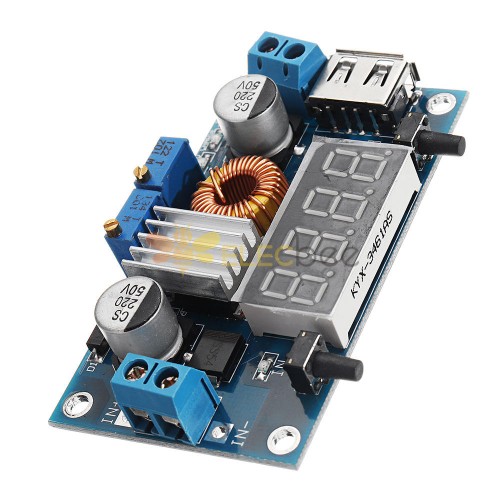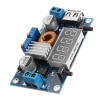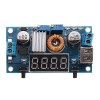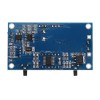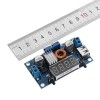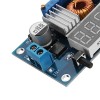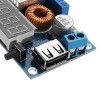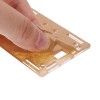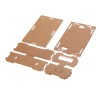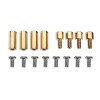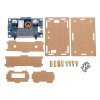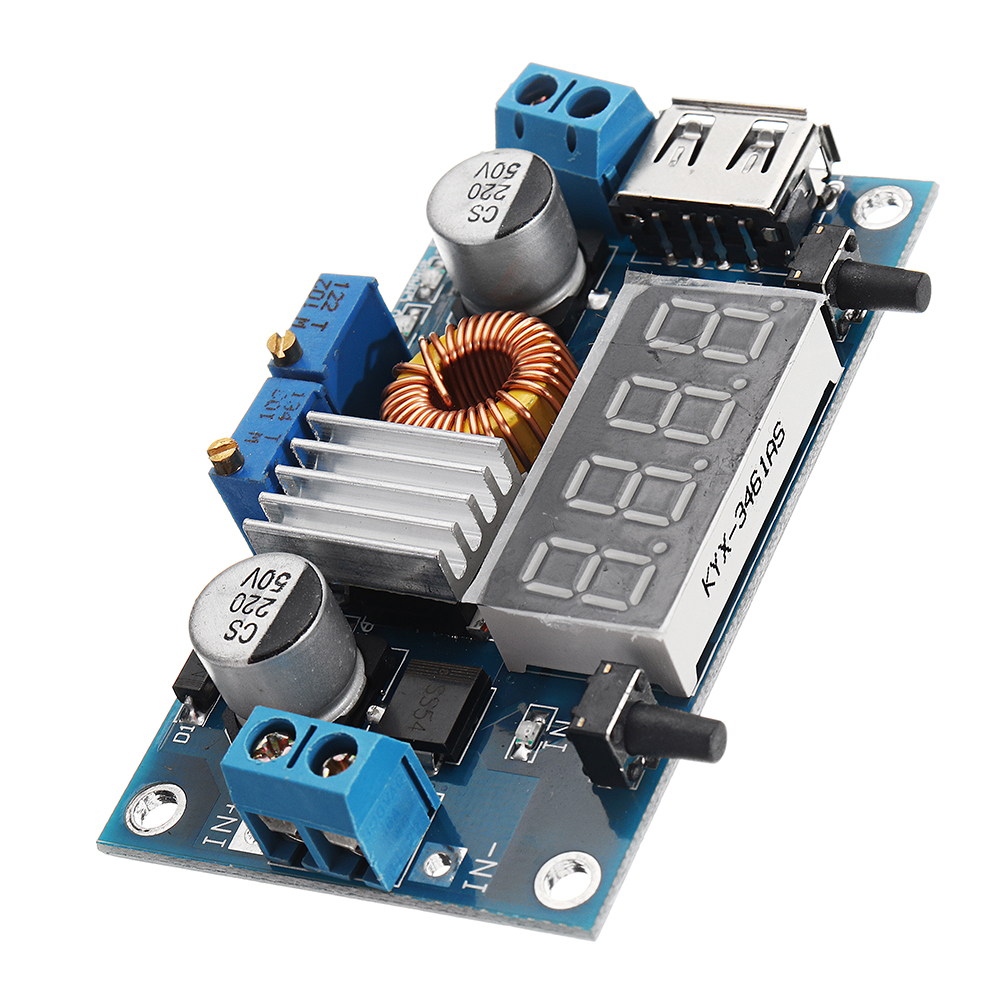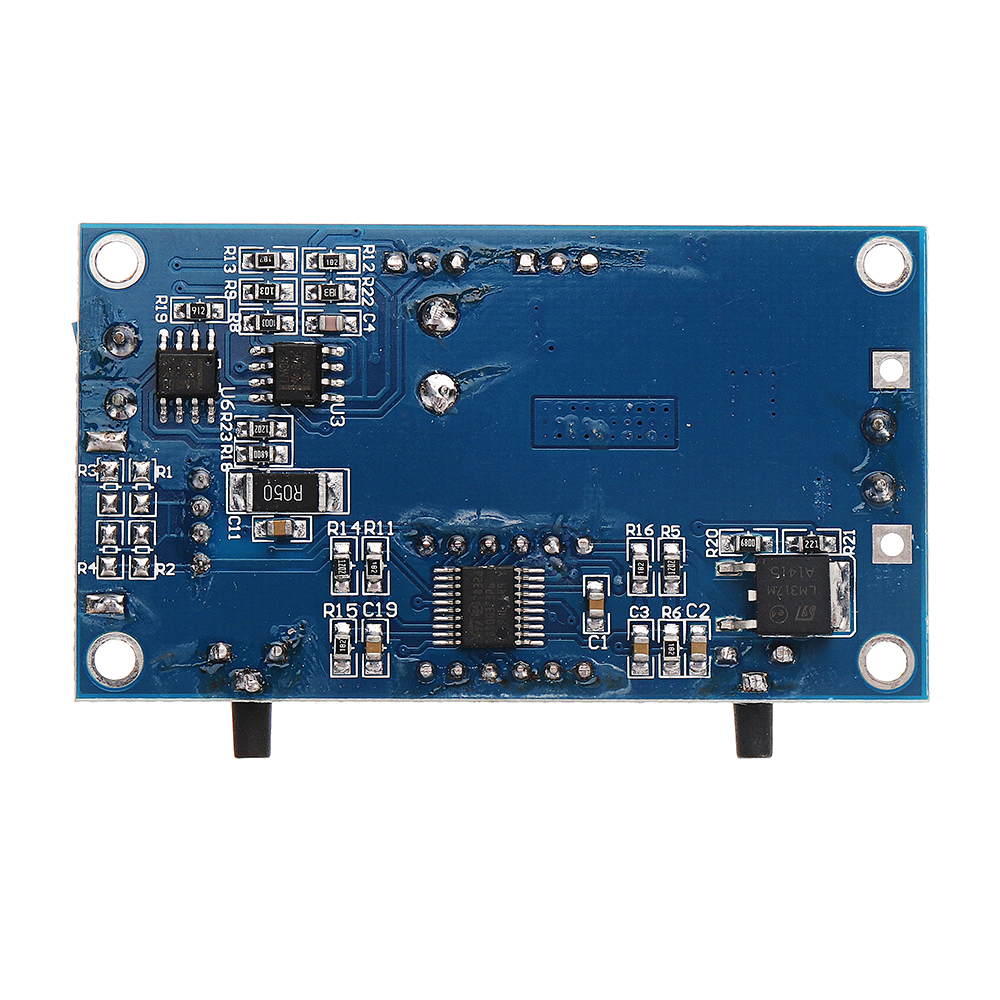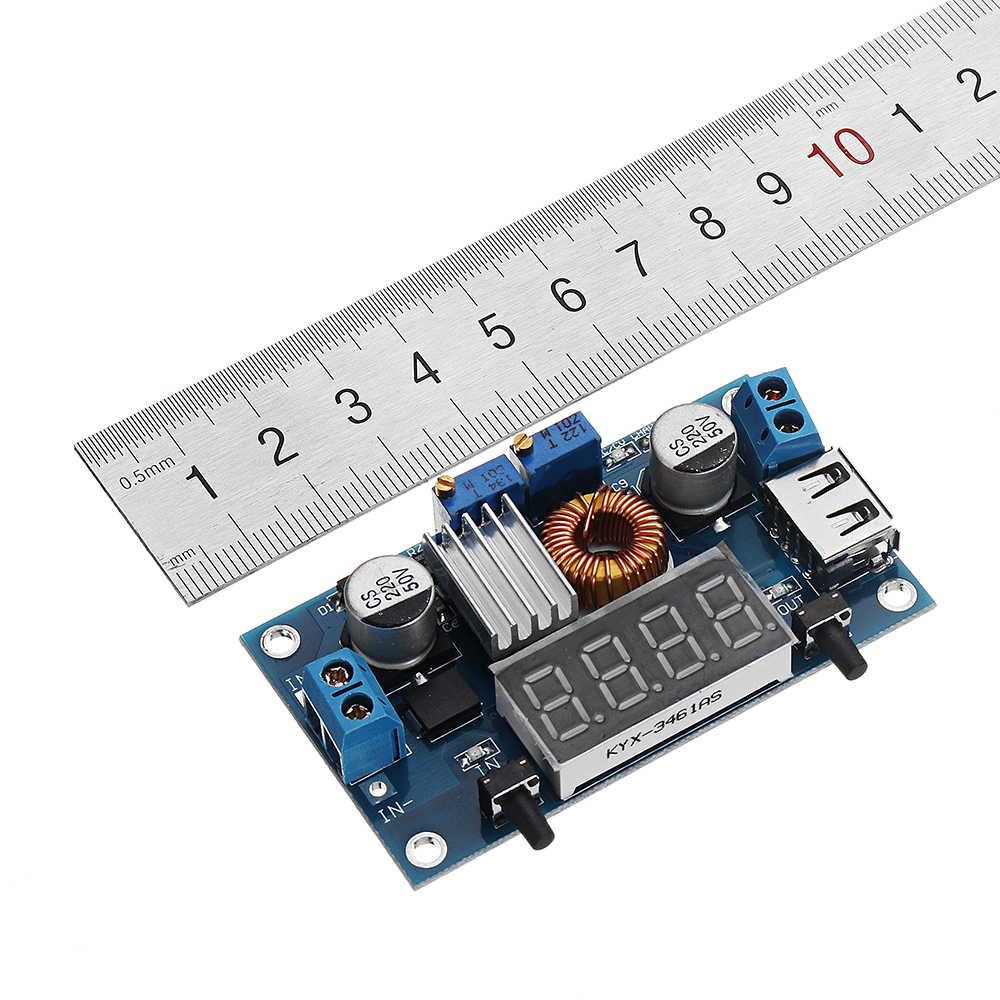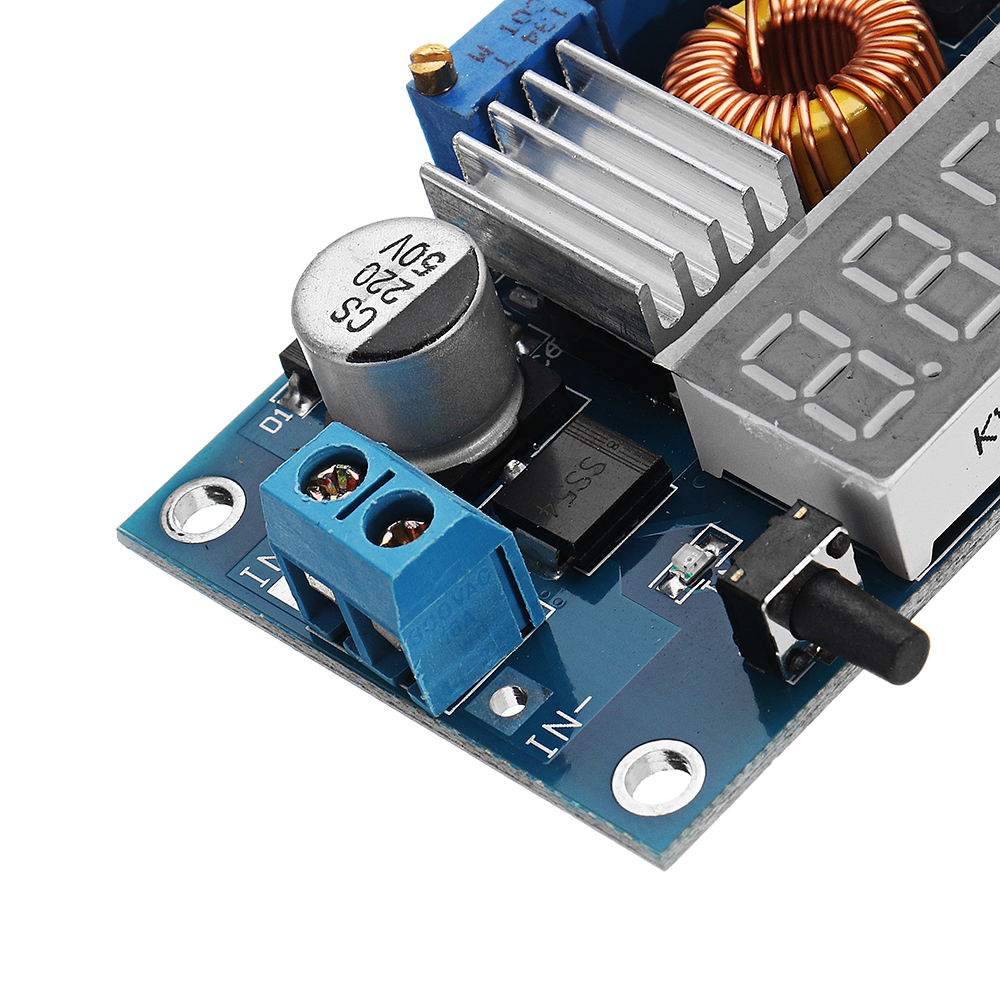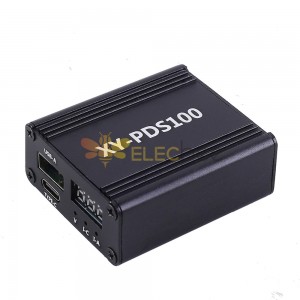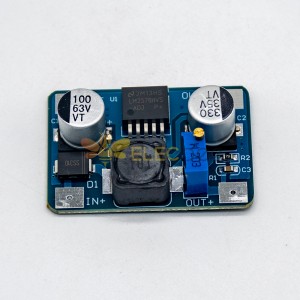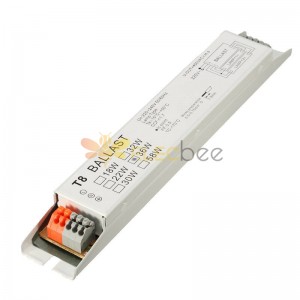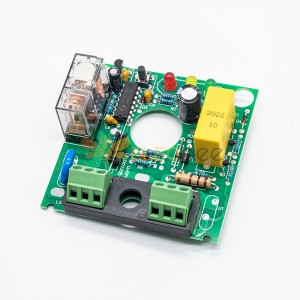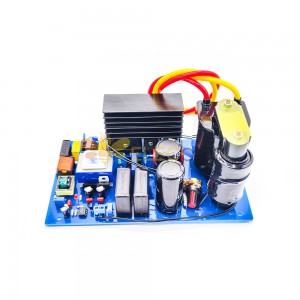1, On-board voltage, current and power meter. This module can be easily used without a multimeter, which is simpler and more intuitive.
2, On-board USB interface, can easily charge digital products. (Note: The USB output voltage is the same as the module output voltage. It is not a fixed 5V output. Please confirm before charging the USB device.)
3, High power, high efficiency, 5A, low ripple;
4, Three major functions:
(1) Used as a normal step-down module with overcurrent protection capability;
(2) It is used as a charger for various voltage value lithium batteries, batteries, nickel-cadmium nickel-hydrogen batteries (battery packs), and used in solar panels, wind turbines, etc.;
(3) Used as a high power LED constant current driving module;
5, With constant voltage and constant current two modes, there are indicators to indicate which mode the module is currently in;
6. When used as a lithium battery charger, you can set the float voltage and the charge current. There are indicators to indicate whether it is charging is already full;
7, With current limit protection, even if the output is short circuit will not burn the module.
8, On-board voltage, ammeter can be self-calibrated, there will never be inaccurate problems!
Specifics:
Input Voltage: DC 5V To 36V (digital tube correctly displays power supply above 6.7V)
Output Voltage: 1.25-32V continuously adjustable (input voltage needs to be 1.5V higher than the output voltage)
Output Current: adjustable, up to 5A (recommended for use within 4.5A)
Output Power: up to 75W (recommended to use within 50W, please reduce power when using large differential pressure)
Working Temperature: -40~+85 degrees
Working Frequency: 180KHz
Conversion Efficiency: up to 96%
Is Short Circuit Protection: Yes
Is Over Temperature Protection: Yes (automatically turn off the output after over temperature)
Input Reverse Connection Protection: None, (If necessary, please input a large current diode in the input string)
Installation Method: 4 3mm silk
Wiring Method: Terminal block or soldering terminal, V-IN is input, V-OUT is output.
Application range:
1. Use as a normal buck module with overcurrent protection
(1) Press the right button to adjust the digital meter to the [Display Output Voltage] interface, and adjust the “Constant Piezo Transistor” to make the output voltage reach the desired voltage value;
(2) Adjust the digital meter to the [display output current] interface, directly short the output end of the module (find a thick wire to short the output end), adjust the "constant current potentiometer" to make the digital meter The current value reaches the preset overcurrent protection value; (for example, if the current value displayed by the onboard ammeter is 4A, then the maximum current of the module is limited to 4A, and the red indicator light is bright when the current reaches 4A)
(3) Connect the load and work.
2. Use as a battery charger
Modules without constant current function cannot be used to charge the battery. Because of the large voltage difference between the battery and the charger.
Causes the charging current to be too large, causing damage to the battery, so start charging the battery with constant current when charging
Automatically switch back to constant voltage charging to a certain extent.
(1) Determine the float voltage and charge current of the battery; (if the lithium battery parameter is 3.7V/2200mAh, then the float voltage is 4.2V, and the maximum charge current is 1C, ie 2200mA)
(2) Under no-load conditions, adjust the digital meter of the module to the [display output voltage] interface, and adjust the "constant piezoelectric positioner" to make the output voltage reach the float voltage;
(3) Adjust the digital meter to the [display output current] interface, and directly short the output end of the module (find a thick wire to short the output end), then adjust the "constant current potentiometer" to make the digital meter The current value reaches a preset charging current value;
(4) The charging lamp current defaults to 0.1 times the charging current; (the battery is gradually reduced during the charging process, gradually changing from constant current charging to constant voltage charging, if the charging current is set to 1A, then when When the charging current is less than 0.1A, the blue light is off, the green light is on, and the battery is charged.
(5) Connect the battery and charge it. (Steps 1, 2, 3, and 4 are: input terminal is connected to the power supply, and the output terminal is not connected to the battery.)
3. Use as LED constant current drive module
(1) Determine the operating current and maximum operating voltage at which you need to drive the LEDs;
(2) Under no-load conditions, adjust the digital meter to the [display output voltage] interface, adjust the "constant piezoelectric positioner" to make the output voltage reach the LED working voltage;
(3) Adjust the digital meter to the [display output current] interface, and directly short the output end of the module (find a thick wire to short the output end), then adjust the "constant current potentiometer" to make the digital meter The current value reaches a preset LED operating current;
(4) Connect the LED and test the machine.
(Steps 1, 2, and 3 are: input is connected to the power supply, and the output is not connected to the LED light)
Precautions:
1. Do not share the input ground and output ground of the module. This will cause the module current sampling resistor to bypass, so that the module can not adjust the output current. It is easy to burn the module when the load is connected.
2. The output of the module has a current sampling resistor. After the load is connected, there will be a voltage drop of 0~0.2V, which is normal.
3. When the module output voltage cannot be adjusted, please turn the potentiometer counterclockwise for more than 10 turns, then use the module to adjust the voltage normally.
4. When the output exceeds 3A or 35W, please strengthen the heat dissipation!

